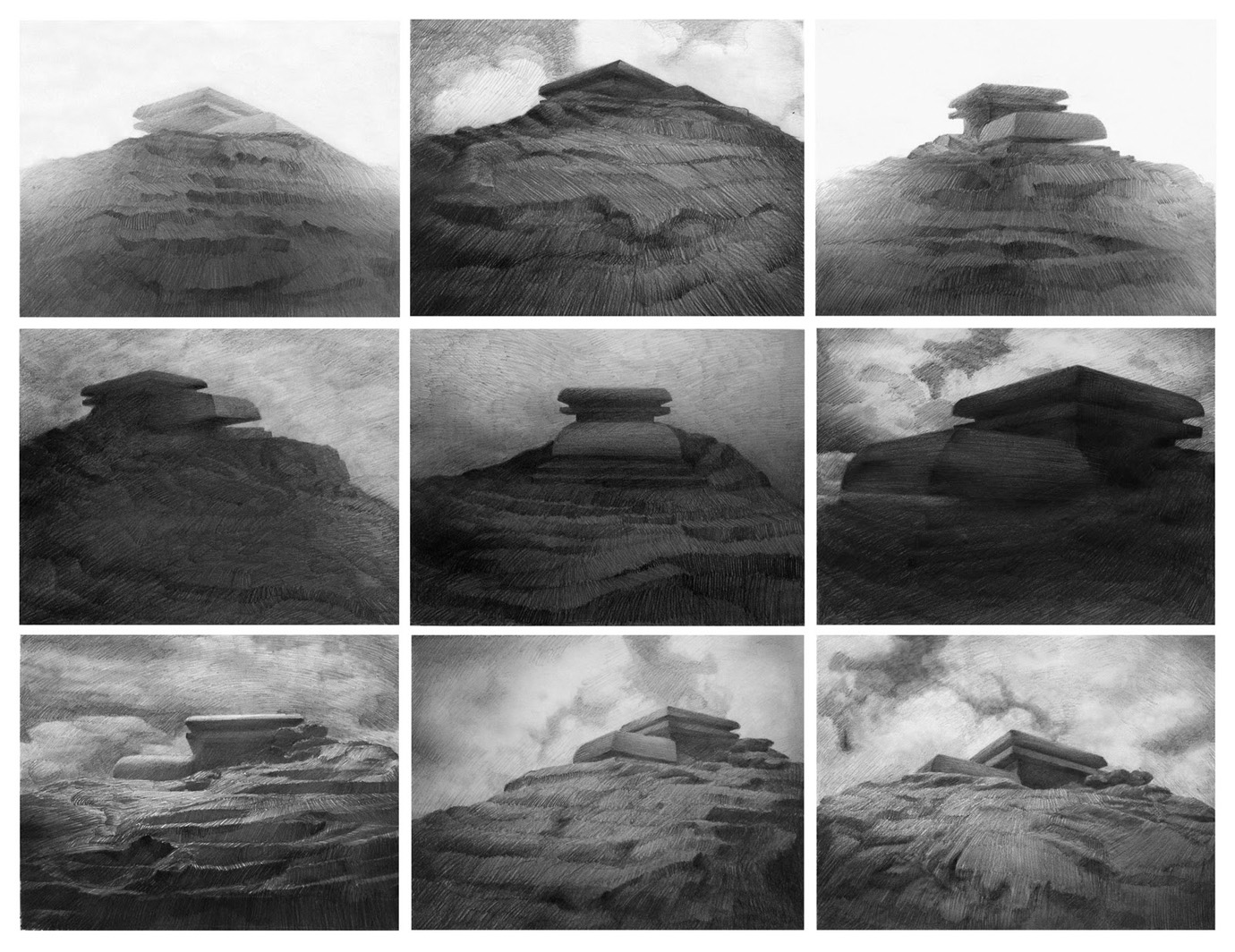-

MAREUNROL’S
-Mārīte Mastiņa and Rolands Pēterkops, the minds behind fashion brand MAREUNROL’S pulled their strings for the installation TENANTS which just closed at the Villa Noailles in Hyères, France. The Latvian duo from Riga had already won the two biggest prizes at the Hyères fashion festival in 2009, made a stunning return fashion show in 2010, but his year’s exhibition proves not only their virtuosity in fabricating elegant and wearable pieces of clothing, but also their ability to create a much broader, often dark and poetic universe.
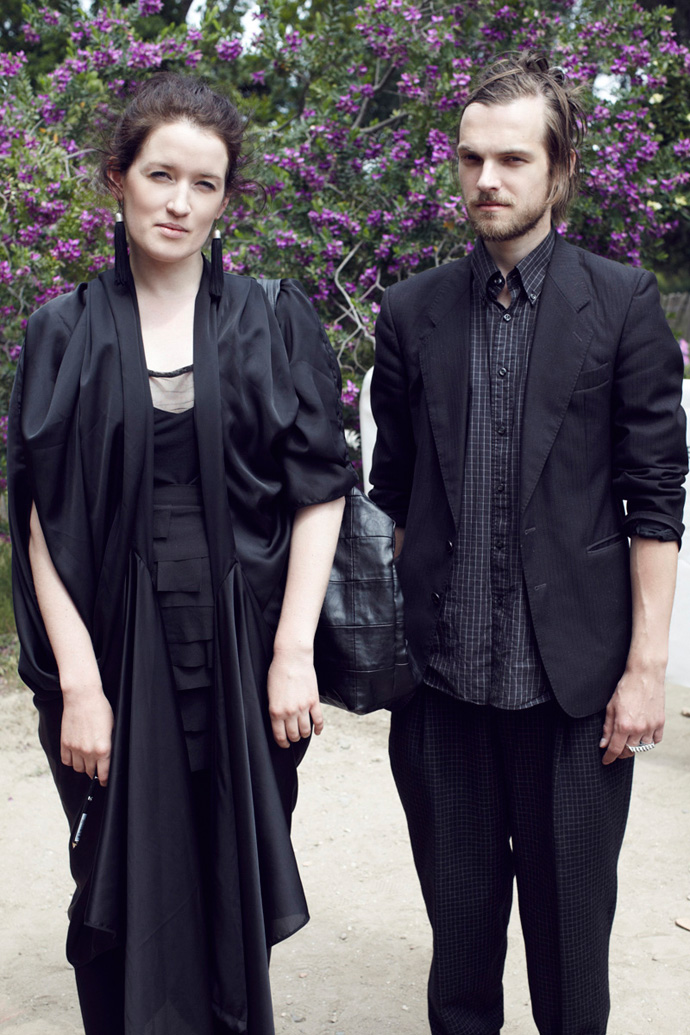 Mareunrol: Mārīte Mastiņa and Rolands Pēterkops at the garden of the villa Noailles.
Mareunrol: Mārīte Mastiņa and Rolands Pēterkops at the garden of the villa Noailles.RENÉ HABERMACHER: what was the point of departure for this installation and the inspiration behind it?
ROLANDS PETERKOPS & MARITE MASTINA: When we start to work on a new collection, we always make the designs first to fit on miniature mannequins. And each time we both have discussed the idea of beautiful dolls as models so we could our ideas of garments to shoot as small style photos and to show them as the newest collection. That is why this idea came naturally.The advantage of the small scale is that we have the freedom of implement anything, all our ideas without leaving out any of those costing an absolute fortune to make. Visual inspiration came in recent years moving from one apartment to another. That’s why our project is called TENANTS. As any of our works, this work also reflects our experience.
The inspiration for the installation came from artists’ constant moving from one apartment to another, from one neighbors to others, from one room to next and due to moving to new environment always makes you get used to new mystical noises, strange objects, loud or too quiet neighbors and other peculiarities connected with the apartment. But of course, with time you get used to all that. However, that all provoked thinking of how space influences those living in it and vice versa, and whether all these things in one way or another influence people and whether one imperceptibly starts to change, and whether this oddity is just in one’s mind, not reality. This is how emerged the idea for the installation with people/ tenants who dwell in their apartments and become as one with it. All their belongings are like a huge enormous shell/ attire which tell all their peculiarities, interests, specific hobbies and many other things.
These stories are made as small installations which show short sketches from character’s daily life. They communicate through costumes, scenography, sound and light. It is important that not only costumes and puppets are made for the installation, but also environment/ scenography, where they can express themselves and show the intended story, by forming a figurative composition which is combined with a surreal fantasy, mystique and a pinch of wit.
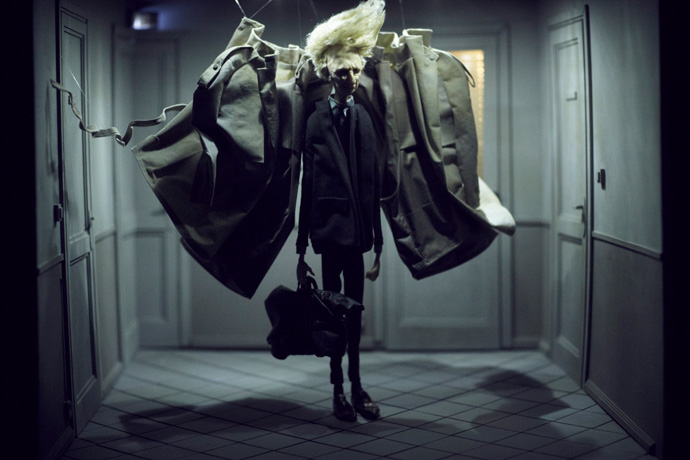 Mārīte Mastiņa and Rolands Pēterkops: Tableau from the exhibition TENANTS.
The dolls character is inspired and modeled after Keith Richards.
Mārīte Mastiņa and Rolands Pēterkops: Tableau from the exhibition TENANTS.
The dolls character is inspired and modeled after Keith Richards.Can you explain me the process of planning and making the installations?
First we had a few visions of the project, then we started working on sketches slowly crystallyzing the characters. At the same time we started looking for people who could make the puppets we had envisaged. It was really important for us to find a puppet master who could make the dolls with movable head and arms. It is really important for our Prague project.
(more…)00 -

SANDRA BACKLUND: is knitting herself to the top
-Wherever Sandra Backlund picks her thread it will lead to an incomparable result. That earned her the jury prize in Hyères 2008 and with it international recognition, on which Louis Vuitton had bought in shortly after. The dark Swede impresses with knit works that go far beyond the discipline of fashion and render the use of traditional artisan technique to visionary, body oriented sculptures. Looking at her latest installation CUPRUM 2010, it comes not as a surprise she had studied art history.
The Piece made entirely of finest copper yarn, was commissioned by the Villa Noailles for this years exhibition.The Stimuleye talked with Sandra about here recent work. The conversation was shortly interrupted by yet another request from the international glitteratti circuit: Sandra is truly knitting to the top!
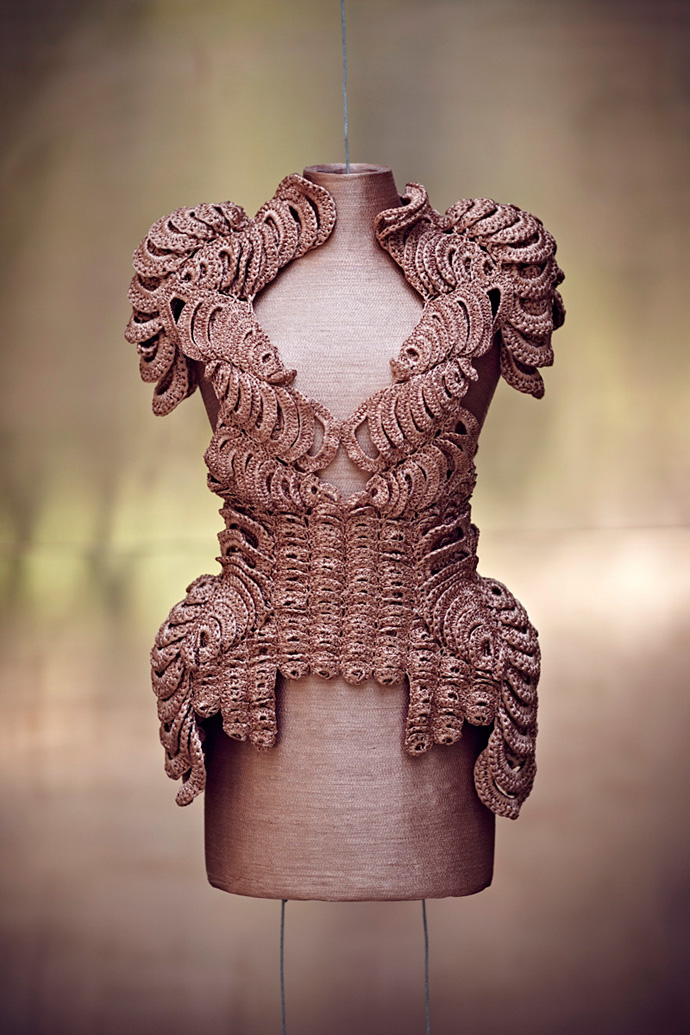 Sandra Backlund's installation CUPRUM 2010 at the Villa Noailles' pigeonnier. Photography by René Habermacher
Sandra Backlund's installation CUPRUM 2010 at the Villa Noailles' pigeonnier. Photography by René HabermacherRENÉ HABERMACHER: What was the point of departure for this installation and the inspiration behind it?
SANDRA BACKLUND: Everything took off from the position they gave me for my exhibition, the Pigeon House in the north garden of Villa Noailles. I think it’s a very beautiful space, so I wanted to use it as a frame, rather then just a location. Because the house is partly open and the exhibition would run for one month outside, I had to carefully consider what material to work with. Already for my current S/S 2011 collection I had been working with a metal yarn made from 100% copper, so in a way it came natural to me to continue exploring that material. With a history of use that is at least 10 000 years old, copper is an important part of both our history and the future. It’s one of the world’s most useful natural resources, 100% recyclable without any loss of quality and it’s estimated that 80% of the copper ever mined, is still in use today. In a way I feel like the story of copper as a material and the way I try to approach fashion go very well together.Can you explain me the process of planning, and the making of the dress?
As always, the handicraft techniques and the human body is the main starting point for me. I never sketch, instead I work with a three dimensional collage method where I develop some basic bricks that I multiply and attach to each other in different ways to discover the silhouette. The only thing I decided already from the beginning was that I wanted some kind of link between the signature piece (the paper origami top) of my winning collection from the 22nd edition of the festival in 2007. Because of the different techniques, materials and colours and because of the process, I guess in the end the link is not so obvious, but there is a few things that is still noticeable, like the silhouette and the size gradings for example.I’ve witnessed you working day and night on this piece – do you have a clue how many hours went into the making?
To be honest, I think that this is the longest piece I have ever worked on. First of all, crochet is always extremely time consuming, especially when it’s layered like this. The copper tape is also very fragile and ones it’s used it, it’s impossible to change, so I had let go of the control and in a way let faith guide me to the end result. If we are talking hours, my estimation is around 500-600 hours.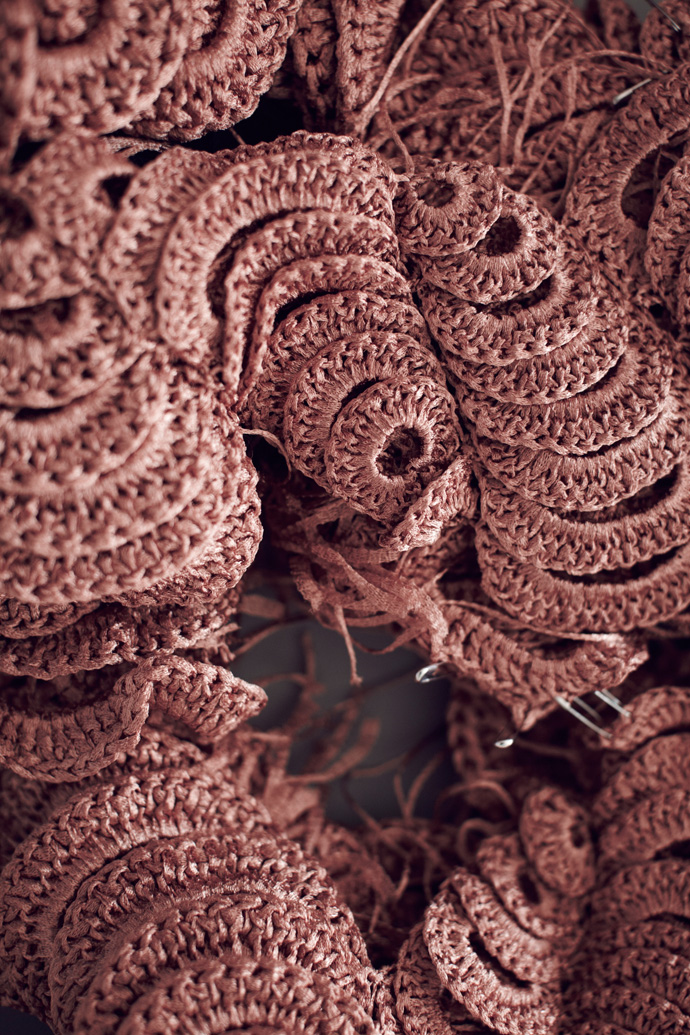
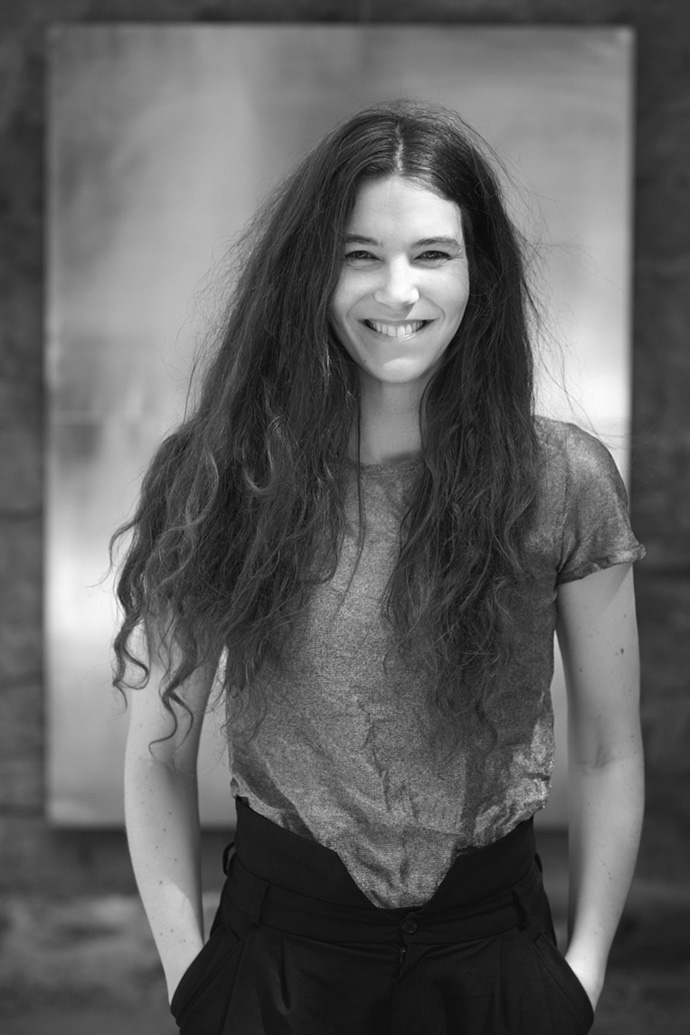 Pieces of copper yarn in the the making, and Sandra at the exhibition space. Photography by René Habermacher
Pieces of copper yarn in the the making, and Sandra at the exhibition space. Photography by René HabermacherYour pieces are often very sculptural, with the artisan work involved, i wonder wether you consider to put your work in a different context than fashion?
Of course I have consider this and many times questioned if fashion is really the right context for my work. As you said, my clothes are always quite sculptural and I also use methods when working that is more close to a sculptor’s, then a tailor’s. But somehow I always come back to the human body. I like to consciously dress and undress different parts of the body and I am very fascinated by all the ways highlight, distort and transform the natural silhouette with clothes and accessories. For me fashion is also one of the most democratic art forms, something that we are all related to. You don’t have to be a designer or a stylist to use clothes as a creative statement, but people in general could of course be more self-governed when t comes to fashion.To me it seems difficult to render your unique approach into industrial production. How are your experiences with that?
About two years ago I was introduced to the long tradition of Italian top knitwear and apparel production. The challenge was to add to my collections something inspired by my hand made pieces that could require only a limited amount of manual work. It was of course a big step for me to go from working alone in my studio, inventing pieces while doing them myself by hand, to suddenly be working in a team of experts within a field of fashion that I never before have had the chance to get to know. I was overwhelmed by all the possibilities I saw and even though I will never give up doing my hand knitted signature pieces, these production tests really made me understand that there is ways to develop my collections that I never thought was possible.What is this festival of Hyères to you? How was it to win – and to be back for this project?
The whole event is really an experience for life when you’re a young designer, all the people you meet and the rush from showing your work in a context like that. I didn’t know about the festival before I met Diane Pernet and she suggested that I should apply. I was crazy happy already when I was selected for the finale and then the wind up… It’s really an important moment in my career so far and to be back again this year and meet everyone was kind of a flash back. When I think about it, I’m still a bit shocked that I was the winner.What’s up next?
F/W 2011-2012 production, S/S 2012 collection and some up coming exhibitions.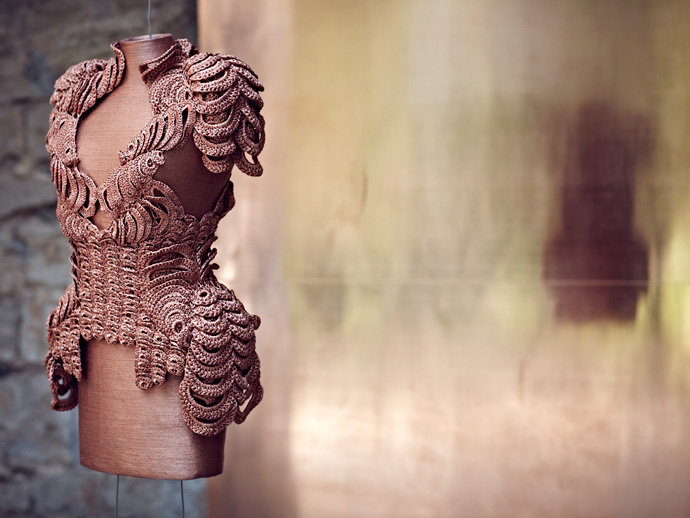
The dress weights over 6kg, made from an archaic material that was the first to be 100% recyclableFurther information on Sandra Backlund: sandrabacklund.com
The Exhibition at the Villa Noailles in Hyeres runs throughout May until the 29th -

PANDELIS CHANDRIS: “Man is an island”
-Insightful, rigorous and critical but warm interlocutor,
Pantelis Chandris, the awarded artist by the Association of Art Critics Hellas, talks about his “Island”, the dead ends and the pleasures of life with the tastes for cooking, to fellow artist Efi Spyrou, in Athens.Pantelis Chandris "180⁰", 2010. Pencil on paper. 15x20cm each
EFI SPYROU: Artist “based in Athens.” What does this means
to you?
PANTELIS CHANDRIS: “Based in Athens”, means nothing. You are considered out of the larger map, out of the game.
Those who live and work in Athens live and work in a purely regional locality. Artists who live and work in London, New York, Berlin have a more extended target audience andthese are cities where things happen.What do you do against this reality?
While I am working on my art projects, I make my living as a professor in the Athens School of Fine Arts.Are you teaching what you are working on?
No. It would be tragic to teach what I am working on. To work, means trying to find a way tocreate something. Exploring a personal issue. Besides, the allurement of teaching has to do with the process of dealing with the impasses of others. (more…)
